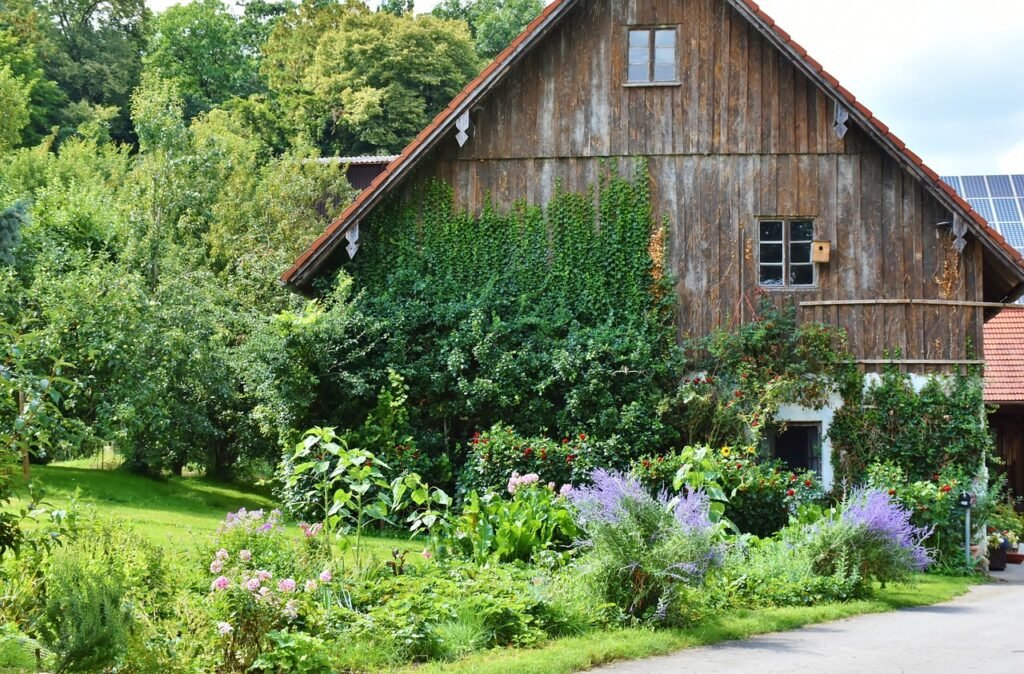
Intro
The desire for a more natural, self-sufficient lifestyle has driven many people to explore the world of homesteading. With careful planning, patience, and commitment, homesteading projects can lead to a life of personal sustainability and independence. This article will guide you through six essential projects to start your journey into off-grid, land-based living.
Creating a Sustainable Water System

One of the cornerstones of homesteading success is the establishment of a reliable and sustainable water system. Before embarking on this project, it’s crucial to survey your property to identify potential water sources that are available. These could be in the form of springs, wells, or even the rainwater that you could collect and store.
Harnessing these different sources effectively requires varied strategies and the right set of equipment. For instance, if you have a well on your property, a solar-powered pump could be a viable solution for a continuous water supply. On the other hand, a rainwater collection system typically involves the use of gutters and storage barrels to capture and save the water for future use.
A sustainable water system is more than just ensuring a steady water supply. It’s about being able to maintain the quality and quantity of water over a period of time. Regular testing of water is essential to make sure it’s safe for use and consumption. Additionally, it’s crucial to develop a maintenance plan to ensure the longevity and efficiency of your water system.
It’s also important to consider conservation and waste reduction measures when setting up your water system. This could include the use of water-saving fixtures, efficient irrigation methods for your garden, and recycling gray water where applicable.
A sustainable water system is a complex but vital project that will ensure your homestead has a reliable water source. With careful planning, investment in the right equipment, and regular maintenance, it is a significant step towards achieving self-sufficiency.
Growing Your Own Food Forest
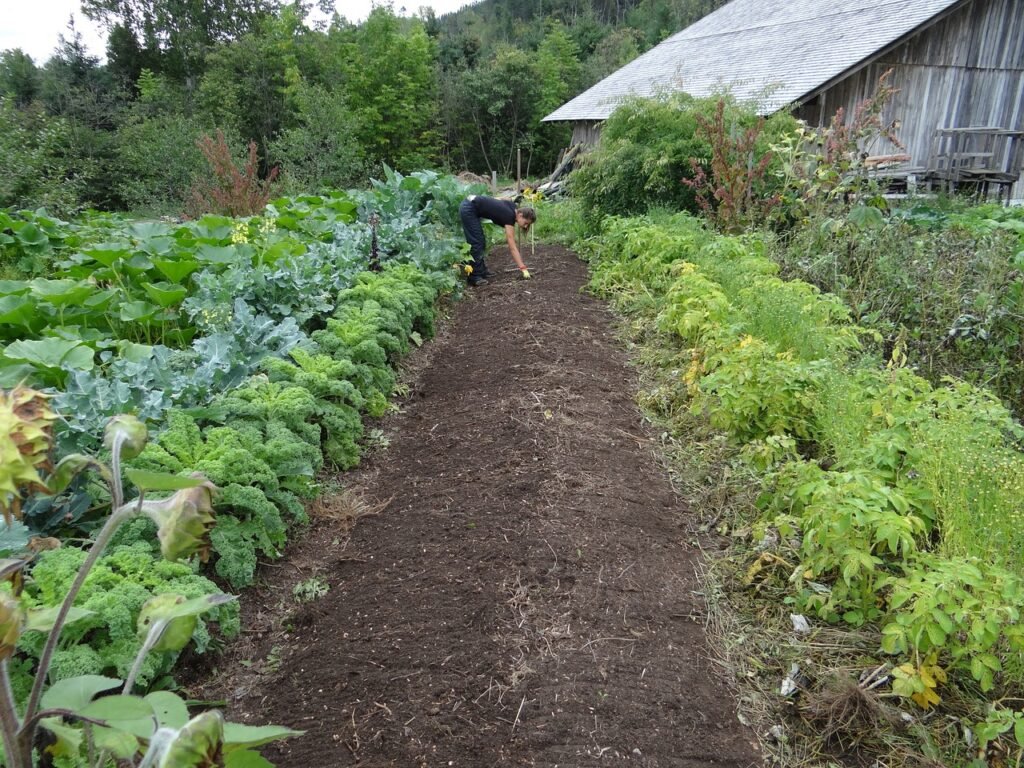
Cultivating your own garden is not just a fulfilling aspect of homesteading, but an essential one. Kickstart your journey to self-sustainability with a simple kitchen garden, planting everyday vegetables and herbs that find their way into your meals. This beginner-friendly project will not only supply fresh, organic produce for your table but will also equip you with gardening basics.
As you become more comfortable with gardening, consider expanding your green thumb endeavors into a full-fledged food forest. This involves the integration of fruit trees, perennial vegetables, and berry shrubs, creating a diverse ecosystem that mimics a natural forest. A well-planned food forest is low maintenance and high yielding, making it a perfect project for ambitious homesteaders.
One way to maintain the health and productivity of your garden is through companion planting. This practice involves grouping plants that benefit each other, such as corn, beans, and squash. The corn provides a structure for the beans to climb, the beans add essential nitrogen to the soil, and the squash leaves shade the soil, preventing weed growth and conserving water.
Organic pest control is another vital aspect to consider in your garden. Rather than relying on harmful pesticides, employ strategies such as intercropping, crop rotation, and the introduction of beneficial insects. These natural methods help keep pests in check, protect your produce, and maintain the balance of your garden ecosystem.
Composting is an eco-friendly way to dispose of kitchen waste while simultaneously enriching your soil. It’s a simple process that involves layering green waste like vegetable scraps with brown waste like leaves or paper in a compost bin or pile. The resulting compost is rich in nutrients, improves soil structure, and helps retain moisture – key factors in a thriving garden.
From the seedling stage to a fully-grown food forest, the process of growing your own food is a constant learning curve. However, the gratification of harvesting your homegrown produce makes it an essential and rewarding homesteading project.
Raising Chickens and Livestock
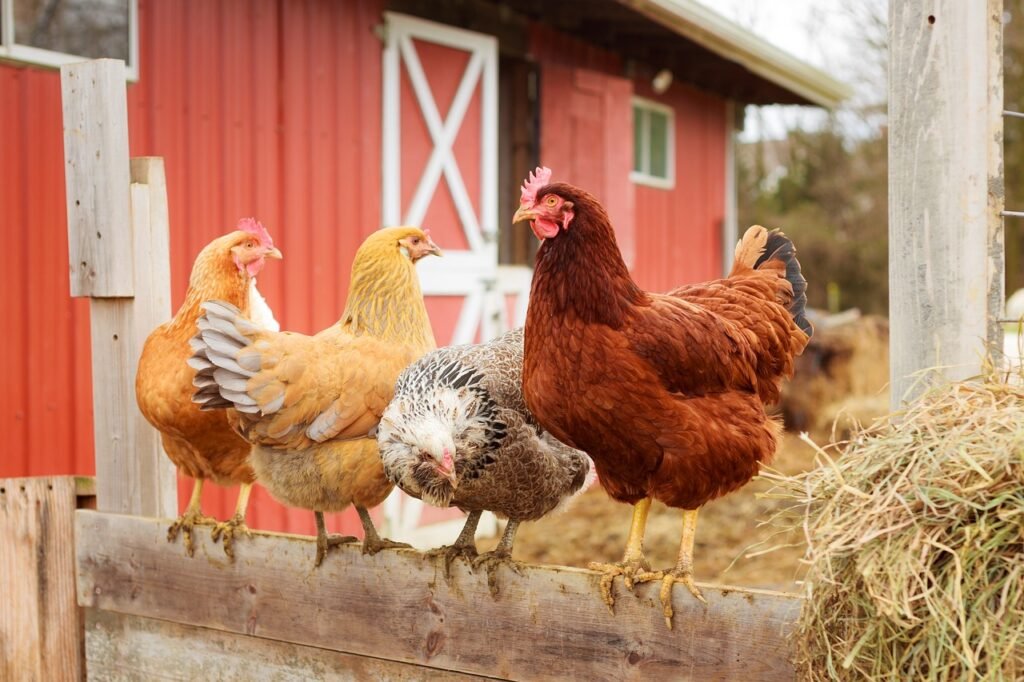
Embarking on the task of rearing chickens and other livestock can be an incredibly rewarding venture in your homesteading journey. The benefits are multifaceted, encompassing a food source as well as a means of fulfilling various homestead responsibilities.
Chickens are an excellent starting point for those new to animal husbandry. They not only supply fresh eggs for the kitchen but also play an integral role in pest control, gobbling up common garden pests. Even their waste is valuable, making a rich addition to your compost pile. To provide your chickens with the security they need from potential predators, the construction of a robust chicken coop is indispensable.
Livestock such as goats and cows can be a bit more challenging to rear, but the benefits they offer make the effort worthwhile. These larger animals can provide a steady supply of milk and potentially meat for your family, depending on your homesteading goals. Additionally, these animals can take on roles like grazing and plowing, making them vital contributors to your homesteading operations.
Before you introduce any animals to your homestead, it’s crucial to conduct thorough research. Understand the dietary needs, behavior patterns, and space requirements of each species to ensure they can thrive in your care. Proper animal husbandry is not only ethical but also results in healthier, more productive animals.
You might also want to explore local regulations and requirements for raising livestock. Some areas may have zoning restrictions or health regulations that you’ll need to follow. In some cases, you may need to secure permits or licenses, so it’s essential to understand these requirements before investing in animals.
Finally, consider the long-term commitment involved in raising animals. Livestock requires daily care, regardless of the weather or your personal schedule. This responsibility can be demanding, but it also offers a rich learning experience and a rewarding connection to your food source.
Starting with chickens and gradually expanding to other livestock can enhance your self-sufficiency journey significantly. By taking the time to understand and meet the needs of your animals, you’ll contribute significantly to the thriving ecosystem of your homestead.
Mastering the Art of Food Preservation
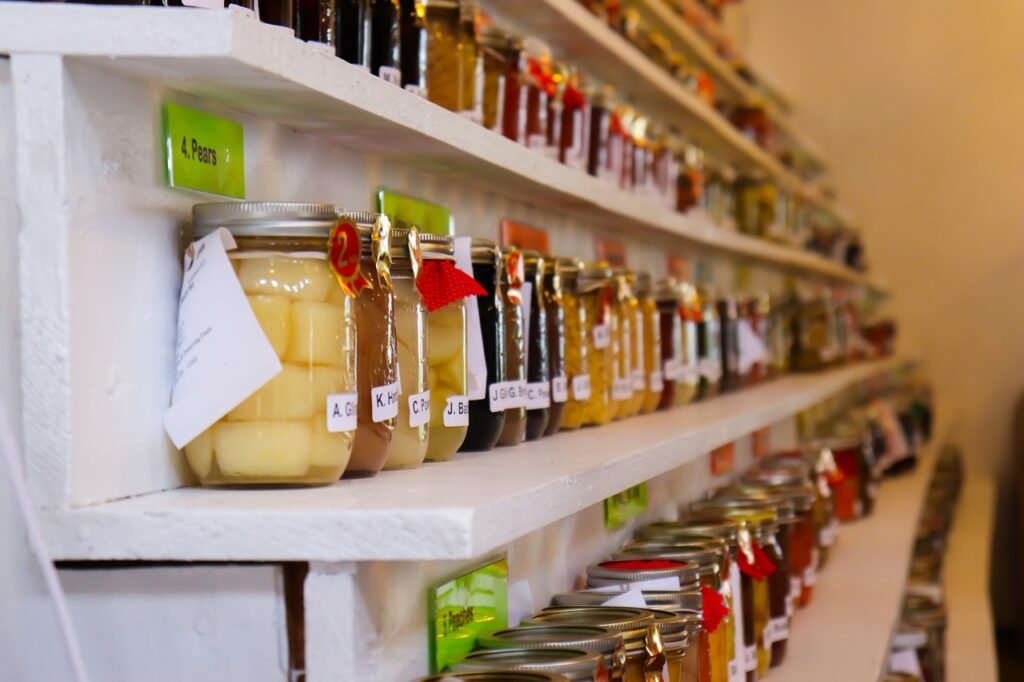
To maximize the benefits of your fruitful garden and healthy livestock, understanding and implementing food preservation techniques is a must. This homesteading project ensures that your bountiful harvest and home-raised meat can be savored all year round, not just when they’re in season or freshly harvested. From canning to drying, fermenting to cheese making, each method offers a unique way to extend the shelf-life of various food items, while also enhancing their flavor.
Canning is a versatile technique that works well with a wide array of produce from your garden, as well as meats from your livestock. The process involves heating jars filled with food to kill bacteria, yeast, and molds that cause food to spoil, then cooling them to create a vacuum seal. This prevents new bacteria from entering and spoiling the food, preserving it for an extended period. Fruits, vegetables, and meats can all be safely canned, making it a comprehensive food preservation method.
On the other hand, fermenting food is an age-old practice that offers a host of health benefits along with preservation. Fermented foods like sauerkraut, kimchi, and pickles not only last longer but are also packed with probiotics that boost gut health. Making these fermented foods at home can be a rewarding project that allows you to experiment with flavors while extending the life of your harvest.
Drying is another practical and straightforward method of preservation. By removing the moisture from foods, you make it less hospitable to bacteria, mold, and yeast. Sun drying, air drying, and using a dehydrator or an oven are all effective ways to dry various foods, including fruits, vegetables, and herbs.
Finally, for those who have ventured into raising dairy animals, cheese making can be an exciting project. Transforming fresh milk into cheese not only preserves the milk but also results in a nutrient-dense food that can be enjoyed in a multitude of ways.
Each preservation method requires a different set of skills and equipment, but mastering them can significantly increase your homestead’s food security and sustainability. It allows you to enjoy the fruits of your labor all year round, making it a highly beneficial and rewarding homesteading project.
Building and Maintaining Essential Structures
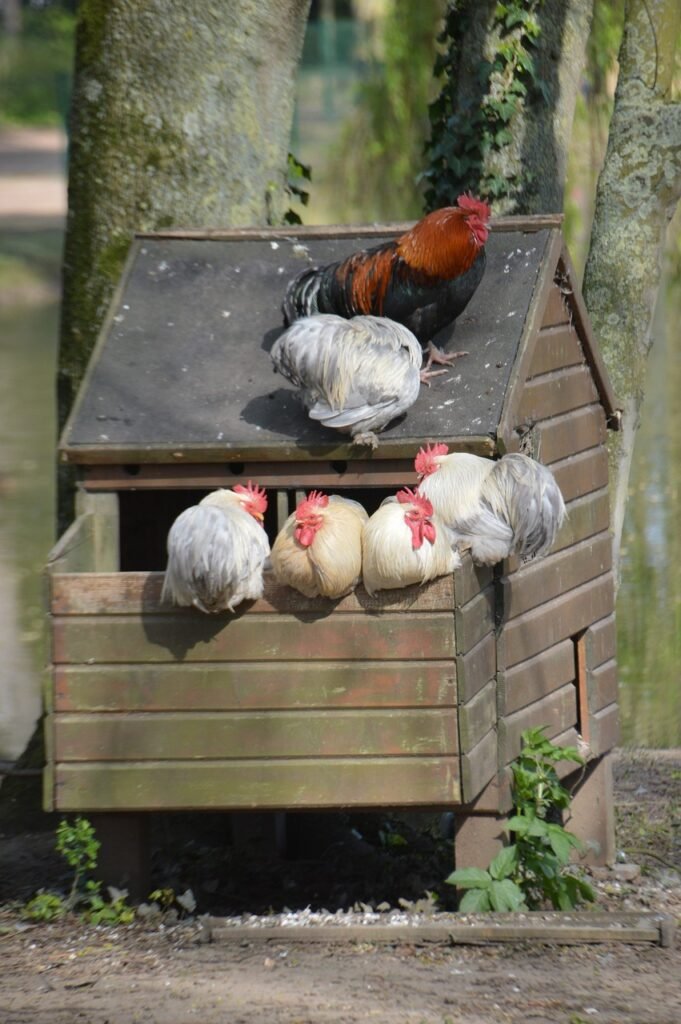
Having the skill to construct and preserve various structures is an indispensable part of a successful homesteading journey. This could include anything from a secure chicken coop that protects your flock, a practical garden shed for tool storage, to a greenhouse for year-round growing. These structures not only serve specific purposes but also contribute to the overall efficiency and longevity of your homestead.
Before you pick up your hammer and nails, it’s crucial to familiarize yourself with the fundamentals of construction. Understanding how to safely use various hand and power tools is key. Equally important is the ability to interpret building plans and designs. Learning about the different types of materials available, their strengths and weaknesses, and the best uses for each, will help you make informed choices for your building projects.
Building a chicken coop, for example, requires considerations of space, security, and access to food and water for your poultry. Incorporating features like nesting boxes for egg-laying, roosting bars for sleeping, and secure fencing to deter predators are all part of a well-planned coop. Maintaining your chicken coop involves regular cleaning and repairs to ensure a healthy environment for your flock.
For garden storage or tool sheds, consider the size based on your tool inventory and future additions. The shed should be waterproof, lockable for security, and organized for easy access to your tools. Regular maintenance checks will help identify any leaks or damage early, preventing any potential loss or damage to your tools.
Greenhouses, on the other hand, require careful planning with regard to location, size, and materials used for construction. They need to be positioned to maximize sunlight exposure and made from durable, heat-retaining materials. Routine maintenance involves checking for any damage to the structure, ensuring proper ventilation, and adjusting temperatures and humidity levels as needed.
The ability to build and maintain structures on your homestead not only provides essential shelter and storage but also offers a sense of accomplishment and enhances the self-sufficient lifestyle. Like all homesteading projects, it’s a continuous learning process, but with each successful build, you’ll gain confidence and valuable experience.
Learning Basic Survival Skills

While the journey of homesteading is a blend of traditional and contemporary practices, mastering fundamental survival skills remains crucial. These skills cover a range of abilities such as administering first aid, creating a fire, identifying edible plants and navigating your surroundings. These skills not only equip you to handle emergency situations effectively but also foster a deeper understanding and appreciation for the natural environment you inhabit. Additionally, learning these skills can often involve connecting with local experts, creating opportunities for community engagement and learning.
First aid is an invaluable skill in a homesteading context. Knowing how to treat minor injuries, burns, bites or allergic reactions can make a significant difference in an emergency, especially if you live in a remote location. Investing in a comprehensive first aid kit and familiarizing yourself with its contents is a good starting point.
Fire building is a fundamental survival skill that has multiple uses around a homestead, from cooking and heating to protection and signal fires in emergency situations. Understanding different fire-building techniques, safe fire management practices, and how to extinguish a fire safely is vital.
Foraging, or identifying and collecting wild food sources, can be a rewarding way to supplement your homestead’s produce. Knowledge of local edible plants, fungi, and berries can provide additional food security. However, it’s important to learn from a knowledgeable source, as many plants have look-alikes that can be harmful or even deadly.
Navigation skills are essential, especially for those living off the grid. Understanding how to use a compass, read topographic maps, and recognize natural landmarks can be invaluable in exploring your land or in the event of an emergency.
Mastering these basic survival skills not only prepares you for unexpected situations but also contributes to your overall self-sufficiency and connection with the natural world. This learning process also provides a wonderful chance to engage with your local community and learn from seasoned experts. Even though these skills may not be needed daily, having them in your homesteading toolkit ensures you’re well-equipped for any scenario.
Venture into your self-sufficient lifestyle with confidence, knowing you have the necessary survival skills to navigate your journey successfully.




